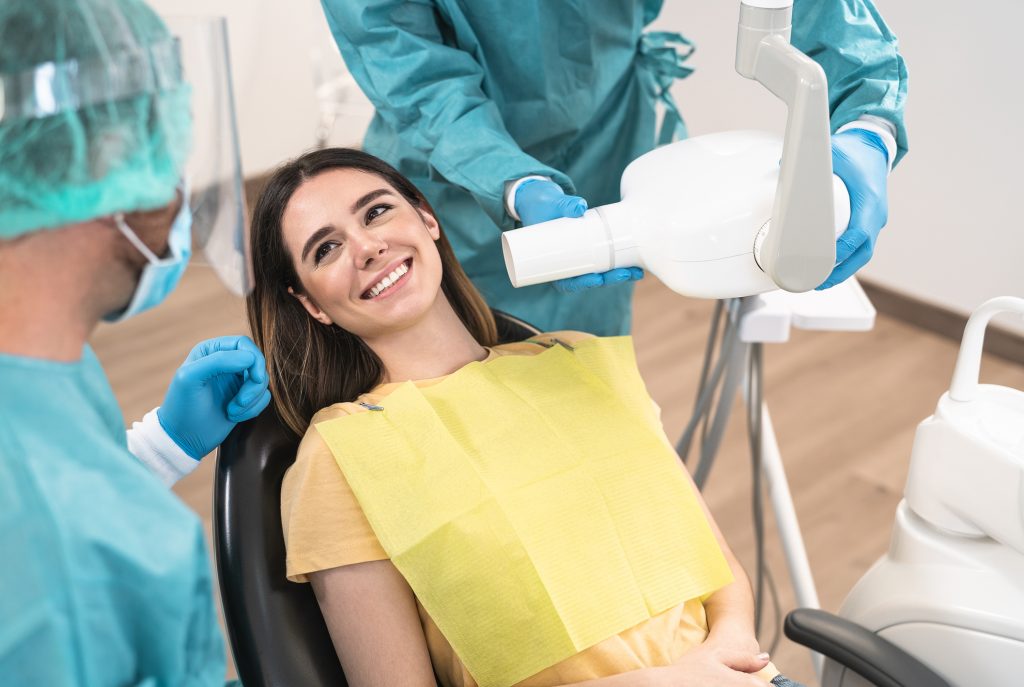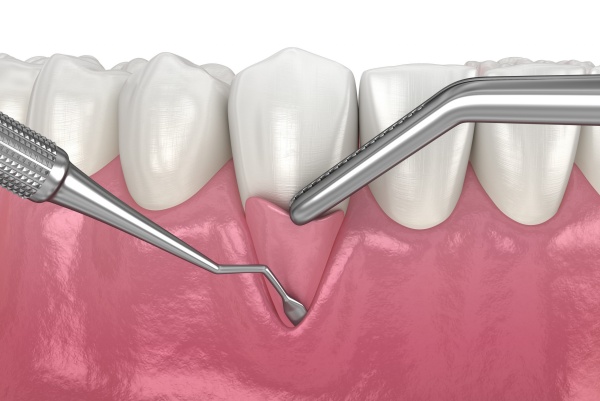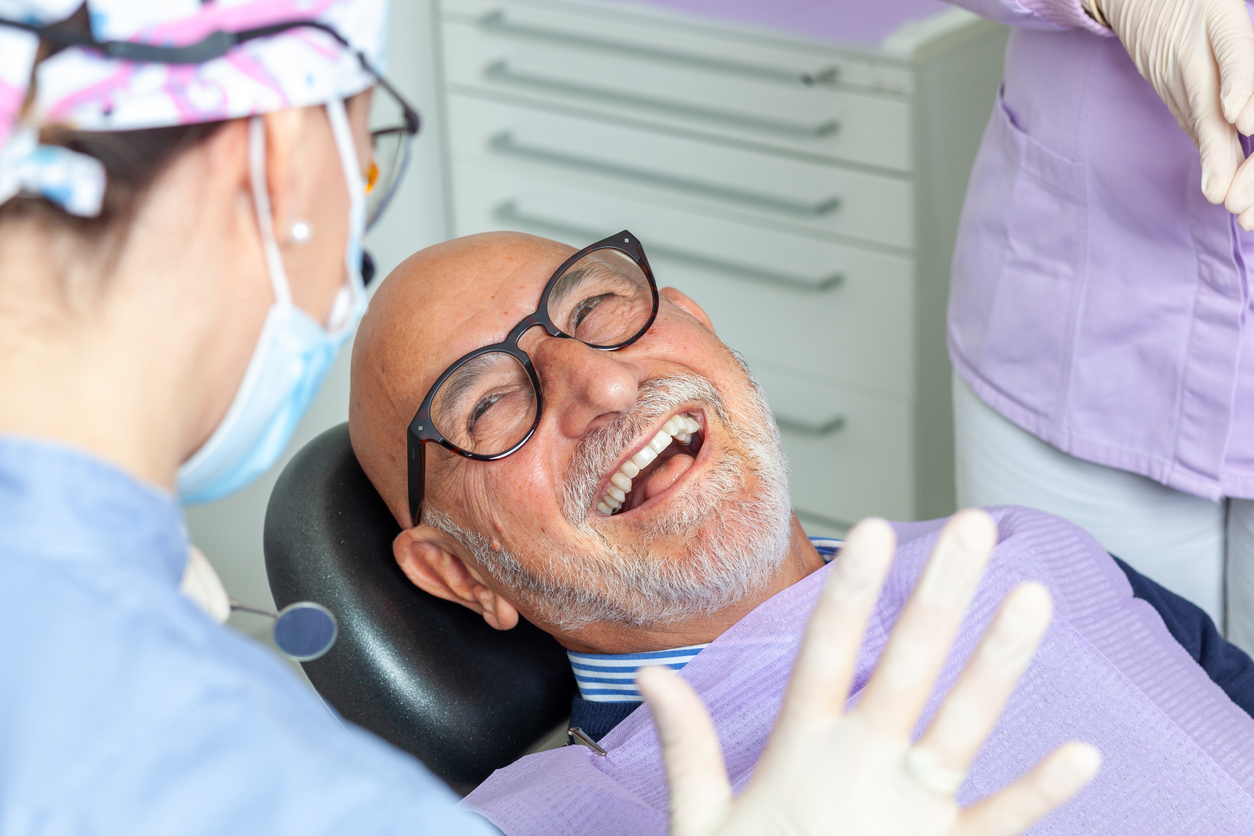Gum grafting is a dental procedure to fortify areas of the mouth that lack gum tissue by adding new layers of tissue. This material typically comes from another section of the patient’s mouth, which is numbed beforehand. The purpose of gum grafting is to combat receding gums.
Receding gums is an issue that occurs when the gum tissue begins to pull back or wear down and expose the root. Gum recession often accompanies periodontal disease. If left unaddressed, gum recession can lead to bone damage, tooth decay, and even tooth loss. This is because receding gums result in gaps between the gums and the teeth, which can easily fill with bacteria.
Gum grafts can help restore your teeth and prevent gum disease from manifesting or worsening. Here’s a closer look at what gum grafting entails, including the benefits and aftercare.
Types of Gum Grafts
There are three different options when it comes to gum grafting:
- Connective tissue grafts
- Free gingival grafts
- Pedicle grafts
In connective tissue grafts, tissue is harvested from a flap in the palate or the roof of the patient’s mouth. This area is numbed beforehand and the flap is sutured afterward. Free gingival grafts follow a similar procedure—however, the tissue is taken directly from the palate as opposed to a flap. Finally, pedicle grafts derive the tissue from the gum itself.
The type of procedure you undergo depends on your personal needs. For example, gingival grafts are common when only a small amount of tissue is needed to restore gum condition. Pedicle grafts, on the other hand, are reserved for patients that have an ample amount of gum tissue available. Dr. Trujillo will evaluate the state of your gums and help you make the right decision.
Aftercare Procedure
Following the recommended aftercare procedure is the best way to minimize discomfort and ensure a speedy recovery. Your gums will be sensitive, so it’s important to take care and to not antagonize them further. Generally, the gum grafting aftercare routine involves the following:
- No flossing or brushing for a specified amount of time
- Maintaining a diet that is easy on your teeth
- Taking pain medication or anti-inflammatories
- Keeping your head elevated above your heart
After the gum grafting, your gums may be too sensitive for regular brushing and flossing. You will be given an antiseptic mouthwash to promote cleanliness. You should also only consume soft, cool foods for about a week. This helps save your teeth from excess pressure. Additionally, Dr. Trujillo may prescribe medication to help manage any pain and accelerate recovery. Finally, keeping your head elevated may help reduce swelling.
In some cases, Dr. Trujillo may provide an upper denture that covers the roof of the mouth. This should remain in place for about twenty-four hours and not removed under any circumstances. Some patients may receive surgical dressing to minimize bleeding, which will be removed after about a week. If bleeding or swelling is excessive, you should contact the office to make sure there are no other complications.
Benefits of Gum Grafting
The main benefit of gum grafting is that it prevents further gum recession. This in turn preserves the quality of your teeth and reduces the risk of tooth sensitivity, root decay, and bone loss. Along with these practical benefits, gum grafting has the cosmetic advantage of boosting self-confidence and making patients feel happier about their smiles.
As a dental procedure, gum grafting tends to be relatively fast and minimally invasive. Although there may be some temporary discomfort after the procedure, the recovery time is generally short and can be quickened by carefully following Dr. Trujillo’s recommended aftercare routine.
Do I Need a Gum Graft?
Because gum grafting plays such a big role in protecting your teeth and limiting the effects of periodontal disease, it’s important that you receive this procedure if needed. In addition to gum recession, here are some of the signs you should look out for:
- Exposed tooth root
- Swollen or bleeding gum tissue
- Persistent bad breath
- Heightened sensitivity to food temperatures
- Genetic predispositions to bone and tooth damage
Even if you don’t see your gums visually receding from your teeth, things like bleeding gums, bad breath, and difficulty tolerating hot or cold foods are all signs that you may need a gum graft. This procedure is key to treating periodontal disease—however, in some cases, it may need additional treatments.
Gum grafting is not a permanent deterrent to periodontal disease. It’s important to take care of your gums through proper cleaning and maintenance. This includes regular brushing and flossing, rinsing with a high-quality mouthwash, and eating a healthy diet. Scheduling regular visits with our office can also help ensure that your gums are in good condition.
Gum Grafting in Phoenix, Arizona
If you’ve noticed any symptoms of gum recession or periodontal disease, you may benefit from a gum grafting procedure. Our team at the Arizona Periodontal Group will assess the state of your teeth and gums and determine the best type of gum graft for you. We will also follow the appointment with regular check-ups to help preserve your well-being. Schedule a consultation with us today to find out more!






